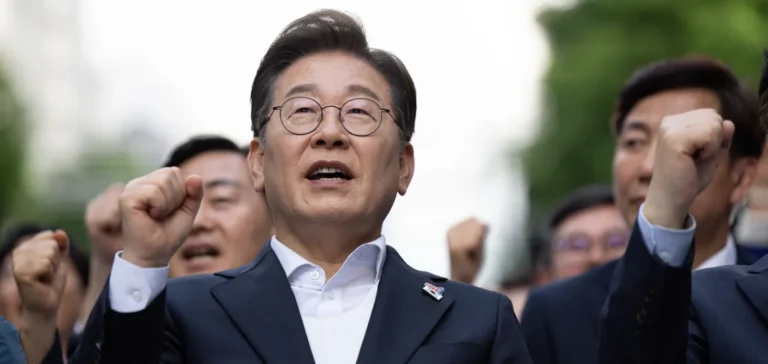Lee Jae-myung, recently elected president of South Korea, plans to re-examine the energy policy implemented by his predecessor, Yoon Suk-yeol, who strongly prioritized nuclear sector expansion. This review comes after the country significantly increased its use of existing nuclear plants and launched several ambitious projects to build additional reactors in recent years. Throughout his electoral campaign, Lee frequently expressed concerns regarding nuclear safety and radioactive waste management. Without calling for the immediate closure of operational plants, Lee intends to adjust the regulatory framework to diversify the country’s energy sources.
A policy inherited from the previous administration
Under Yoon Suk-yeol’s administration, South Korea substantially boosted nuclear energy’s share within its national energy mix. By 2024, nuclear energy accounted for 32% of the country’s total electricity production, becoming the leading energy source ahead of coal and liquefied natural gas (LNG). This increase was notably driven by improved reactor utilization rates, rising from 74.5% in 2021 to 83.8% in 2024, according to Korea Hydro & Nuclear Power (KHNP), the public operator of South Korea’s nuclear power plants. Several new reactors, including Shin Hanul-1 and Shin Hanul-2, each with a capacity of 1.4 gigawatts (GW), have recently commenced operations.
The previous administration also planned additional reactor construction, including Saeul-3 and Saeul-4 units scheduled to become operational by late 2026. The original plan also included reactors Shin Hanul-3 and Shin Hanul-4, targeted for service by 2033. In the longer term, the government even envisioned constructing Small Modular Reactors (SMR) by 2035.
Towards a regulatory adjustment
However, President Lee might now slow or even suspend some of these projects. According to the South Korean law firm and energy consulting firm Yulchon, Lee does not intend to halt reactors currently operating or under construction but seeks to avoid launching new large-scale nuclear projects. Lee instead favors a more balanced energy policy that integrates renewable sources and possibly extends the operating lifespan of existing reactors. The new president rules out reverting to a policy similar to that of Moon Jae-in, which aimed at a gradual nuclear phase-out.
This approach aims to adapt the existing regulatory framework to ensure increased safety while meeting growing electricity demand, particularly driven by energy-intensive technologies such as artificial intelligence (AI). However, industry professionals are still awaiting specific regulatory and operational clarifications to determine the future of ongoing and upcoming nuclear projects.
An energy sector awaiting clarity
The current context places the South Korean energy sector in a strategic waiting phase. Although no sudden closures are anticipated, gradual regulatory adjustments could significantly impact investments and industrial plans in the coming years. Many analysts agree that Lee’s administration must quickly clarify its intentions to provide companies with the visibility necessary for their long-term planning. The period ahead will thus likely be marked by heightened attention to regulatory developments in South Korea’s nuclear sector, especially amid rapidly growing energy demand.






















